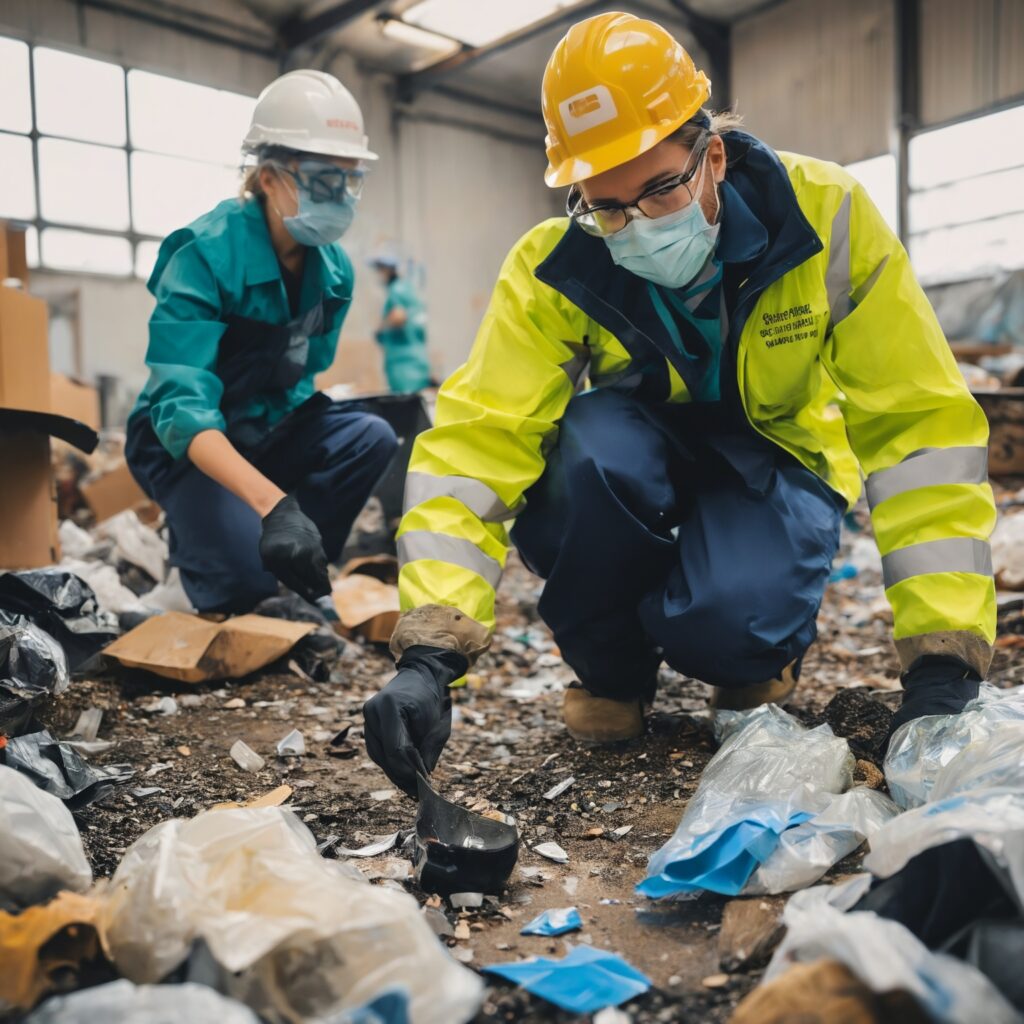Articles
Your one stop shop for all your health & safety resources
Planet-Friendly PPE: Innovating for a Sustainable Future

Personal protective equipment (PPE) is indispensable for worker safety, particularly highlighted during the COVID-19 pandemic. However, the environmental impact of PPE is a growing concern. Innovations in workwear aim to make protecting people more sustainable, addressing both safety and environmental needs.
Environmental Impact of PPE
The COVID-19 pandemic led to a massive increase in PPE usage. The World Health Organization (WHO) estimated that between March 2020 and November 2021, 87,000 tonnes of PPE were purchased globally. Most of this PPE ends up in landfills, creating significant environmental issues.
An environmental advisor at NHS England explains that the main challenge is ensuring PPE is safe and reliable while also being environmentally friendly. The NHS itself is seeking to reduce its environmental impact, having purchased over 780 million PPE items, with 80% of these expected to become waste.
Innovations and Solutions
Efforts are being made to address the environmental impact of PPE by developing sustainable materials and recycling processes. Start-up Stuff4Life, in collaboration with Teesside University, has pioneered a method to recycle polyester workwear. This innovation involves chemical recycling to produce new PPE items from recycled materials, emphasizing the circular economy.
Stuff4Life’s co-founder, John Richardson, explains that this innovation not only addresses waste management but also helps the NHS become more sustainable. The goal is to create a sustainable loop where used PPE is collected, processed, and turned into new PPE.
Measuring and Reducing Impact
For sustainable PPE to be viable, manufacturers need to measure and understand their environmental impact. Claire Weston from RS explains that this involves evaluating the materials used, production processes, and the overall lifecycle of PPE products. This data helps identify areas for improvement and enables the development of more sustainable practices.
The Corporate Sustainability Reporting Directive (CSRD) in Europe requires companies to disclose their environmental impact, pushing for greater transparency and accountability. As companies strive to meet these regulations, innovations in sustainable PPE are becoming increasingly important.
How to Be More Sustainable
- Choose Recyclable Materials: Opt for PPE made from recyclable or more sustainable materials.
- Durability: Select durable, long-lasting items to reduce waste.
- Supplier Credentials: Work with suppliers who provide information on the sustainability of their products.
Company Initiatives
Several companies are making strides in sustainable PPE:
- Arco: Focuses on recycling and upcycling PPE. They are developing products that are easier to recycle and dispose of, aligning with a circular economy model.
- Brick: Uses waste materials to create bricks and PPE items, emphasizing the importance of reducing waste and promoting recycling.
Building a Sustainability Culture
Creating a culture of sustainability within organizations is key. This involves educating employees about the environmental impact of PPE and encouraging practices that reduce waste. Companies like Arco and Brick are leading by example, showing that it is possible to prioritize both safety and sustainability.
Future of Sustainable PPE
As the demand for PPE continues, so does the need for sustainable solutions. Innovations like those from Stuff4Life and other companies are crucial in reducing the environmental impact of PPE. By embracing sustainable practices, the PPE industry can protect workers while also protecting the planet.
The shift towards sustainable PPE is not only necessary but also possible with the right innovations and practices. By focusing on recycling, using sustainable materials, and fostering a culture of sustainability, we can make PPE that is both safe for workers and kind to the environment. The future of PPE lies in balancing these critical needs, ensuring a healthier planet for generations to come.
Submit form
+ Training
+ Consulting
+ Support Services
+ Professional Development
Let us know which service you are interested in:
Please complete the form below and a member of our team will be in touch within 1-3 business days
Thank you for your interest in Demoura Lawson Consulting
Contact Us
Qatar: Unit Office No. 1905: 19th Floor, The E18hteen Tower , Bldg 230, Street 303, Zone 69, Lusail Marina , Qatar
Tel: +974 4445 9206
Saudi Arabia: 3121 Imam Abdullah Bin Saud Bin Abdulaziz Road, Ishbiliyah, Riyadh 13225, Saudi Arabia
Tel: +966 50 685 6910
ADD A COMMENT
July 16, 2024